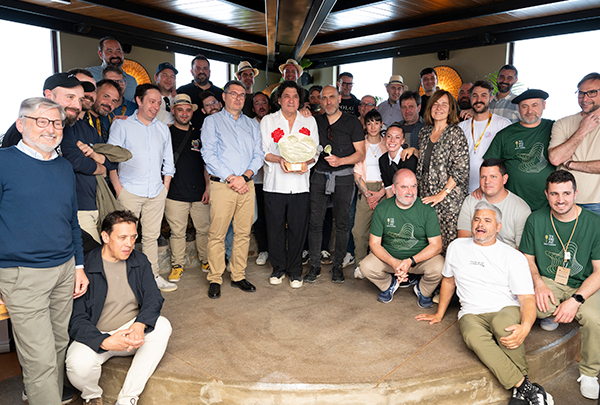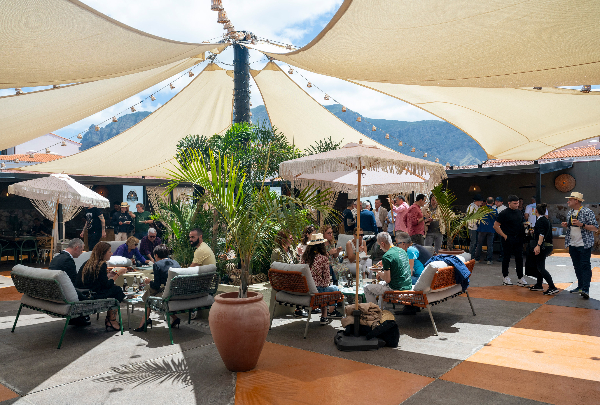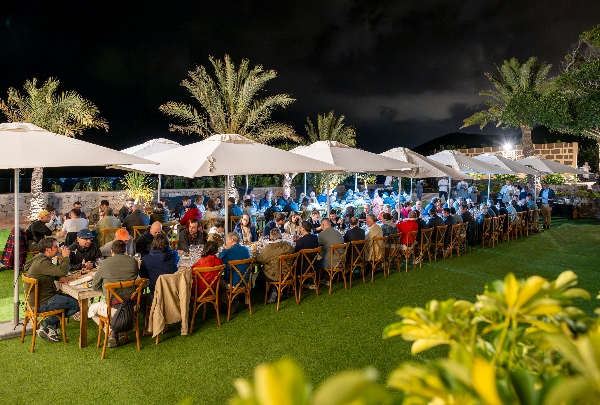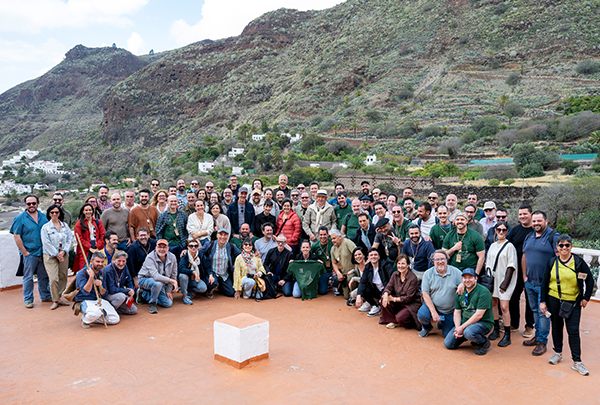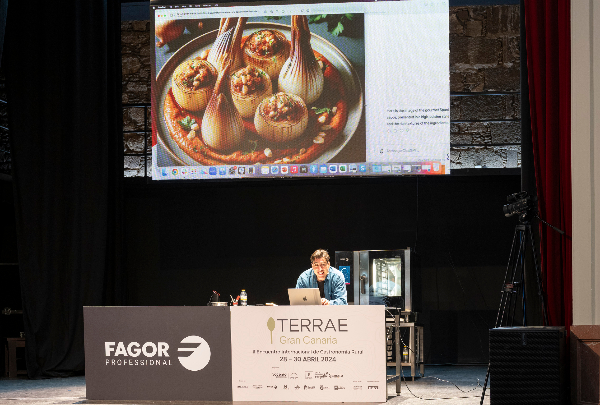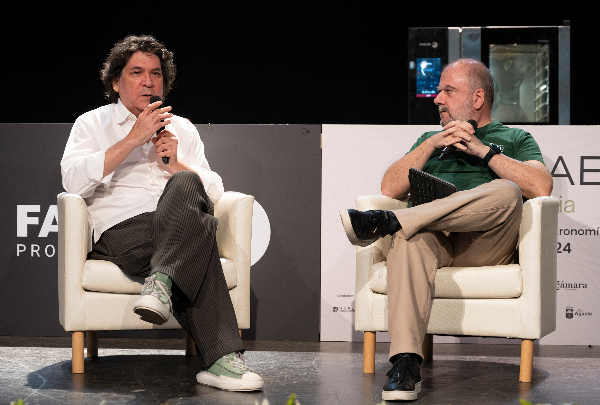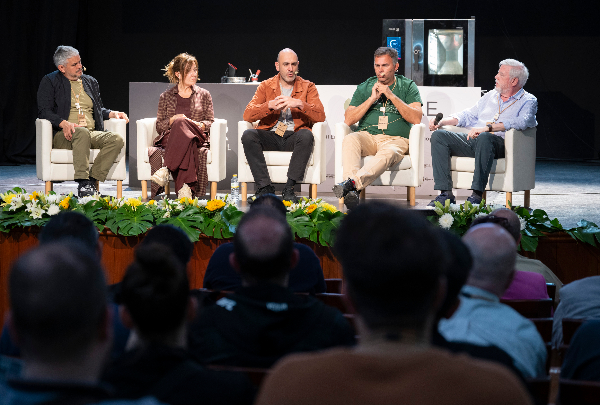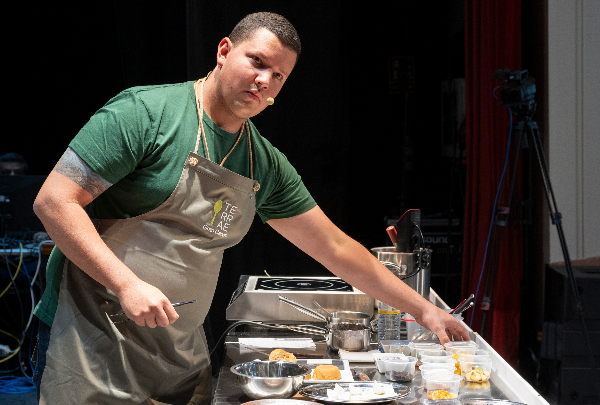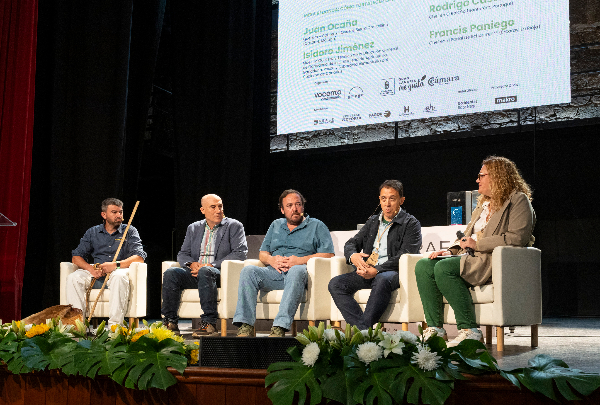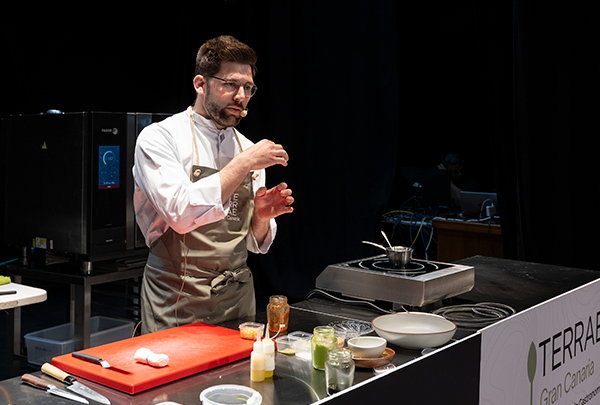News
Terrae: from fabada to queso de flor

The Terrae rural chefs' meeting began with a popular tasting that travelled around Gran Canaria and the peninsula.
There is no better way to start a gastronomic event than by caressing the palate. And this is what Terrae has done, which is being held in different parts of Gran Canaria until the 30th of April, but with Gáldar, the former capital, as the main venue.
In the central Plaza de Santiago, Roberto Ruiz of Hika Gastronomiko (Villabona, Guipúzcoa) lit up the stoves with his marmitako, made with potatoes, green peppers, onions, fumet from the tuna bones and diced fish added at the last minute "so it doesn't dry out", as the chef explains.
Next to him, a local chef, Richard Díaz, from Sorondongo (Las Palmas), with his salted wreckfish stew with chickpeas, in which he works with two broths (one from the fish and the other from the legume) and a touch of cream. In his restaurant, you will find Canarian cuisine that celebrates local products and the people who make them. The queue in front of his stall proves that he was right.
Nandu Jubany (Calldenetes, Barcelona) had no shortage of customers for his cannelloni of roast farm chicken with bacon, bechamel sauce and roast juices with onion and rancio wine. "If we didn't use local products, we'd be nothing," said the Catalan chef.
Braulio Rodríguez, from Majuga (Las Palmas), succeeded in creating a creamy rice with mushrooms in which one of Gran Canaria's star cheeses, Flor cheese, played a leading role. The freshness of the basil sprouts, the strength of the onion seeds and the crunchiness of the crushed totopos combined to create an ensemble that won the admiration of the audience, who asked for more. Rodríguez, whose restaurant is dedicated to the "typicality of the island", wanted to highlight the work of his "left and right hand", Lin Zheng, who never left the kitchen.
After arriving from Peru to be honoured at Terrae for his promotion of Peruvian cuisine linked to local produce and his defence of the work of farmers, Gastón Acurio was part of the team at his yakumanka in Barcelona, with Tomás de la Paz at the helm. They presented an acebichada, a local fish, with which they "linked the Canary Islands and Peru through the potato", as the Peruvian explained.For Acurio, the tribute paid to him at this meeting of rural chefs is "particularly moving" because it is a stage that "seeks to highlight, preserve and give visibility to everything we have done in Peru: defending regional products and producers, bringing chefs to the fore who had no visibility?And all that 20 years ago". Incidentally, his La Mar in Madrid has an opening date, "if all goes well": November.
Carmelo Florido is at the helm of El equilibrista 33 in Las Palmas, and he presented a maki made with bigeye tuna caught in Agaete and gofio, one of the products he most defends in his cuisine because of its versatility in both sweet and savoury dishes.Fortunately, he recalls, the tuna that used to be fished by Japanese trawlers to go straight to the Japanese island can now be enjoyed in the Canary Islands. In his restaurant, "the menu is adapted to the product" and it is one hundred percent Canarian.
Pepe Ron (Bar Blanco, Cangas del Narcea, Asturias) triumphed with his fabada - although he would have liked to have presented his Asturian stew - based on "a good broth of ham shank, which gives it depth, fresh faba beans, chorizo, black pudding, pork sausage, saffron and, halfway through cooking, a fried mixture of garlic, paprika and a pinch of flour".Ron is in Terrae because he is a rural cook, something he considers "really lucky" because "living in the villages means what is defended today as kilometre 0, but what we have been doing all our lives: buying vegetables from the locals, immediacy, freshness, real seasonal cooking".
And we could not miss the "Island of Cheeses", these marvels of pure cow's, goat's, sheep's or mixed milk, treated with vegetable or animal rennet, represented by the Asoquegran Association, which brings together almost thirty small producers from 12 municipalities who work only with raw milk in an island of 1,500 square kilometres, where each cheese expresses its territory.


